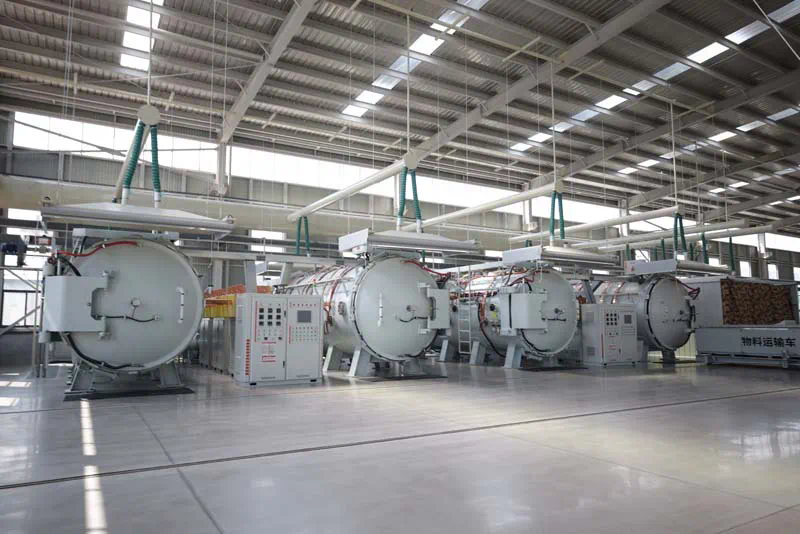Troubleshooting Common Issues in Graphite Condenser Systems
Graphite condenser systems have gained popularity in various industrial applications due to their superior thermal conductivity, corrosion resistance, and longevity. However, like any mechanical system, they can experience issues that may impact performance. Understanding how to troubleshoot these common problems is essential for maintaining efficient operations.
Understanding Graphite Condensers
Graphite condensers operate by cooling vapor into liquid form, utilizing graphite as the primary material for heat exchange. The unique properties of graphite allow these condensers to withstand harsh chemical environments, making them suitable for industries such as petrochemicals, pharmaceuticals, and power generation. Despite their advantages, improper maintenance or external factors can lead to inefficiencies.
Common Issues and Their Symptoms
Several issues can arise in graphite condenser systems, each with distinct symptoms. It is crucial to recognize these signs early to prevent extensive damage or costly downtime.
Overheating
Overheating is one of the most common issues faced in graphite condenser systems. Symptoms include higher than normal temperatures in the condenser and reduced cooling efficiency. This can lead to increased pressure within the system, potentially causing catastrophic failures.
Causes of Overheating
1. Insufficient Cooling Water: Inadequate flow of cooling water can drastically reduce the heat exchange efficiency.
2. Fouling: Accumulation of debris, scale, or biological growth on the condenser surfaces can impede heat transfer, leading to overheating.
3. Incorrect Operating Conditions: Deviations from optimal operating parameters, such as excessive vapor load, can overstress the condenser.
Solutions to Overheating
To address overheating, first ensure that the cooling water supply is adequate. Regularly inspect and clean the condenser to remove any fouling agents. Additionally, recalibrating system parameters to align with manufacturer specifications can help mitigate this issue.
Leaks
Leaks in a graphite condenser can manifest as visible fluid loss or unusual pressure drops in the system. Identifying and repairing leaks promptly is vital to maintain efficiency and safety.
Identifying Leaks
1. Visual Inspection: Regular checks for wet spots or corrosion around joints and seals can help catch leaks early.
2. Pressure Testing: Conducting routine pressure tests can reveal hidden leaks that are not immediately visible.
Common Causes of Leaks
1. Material Fatigue: Over time, the mechanical properties of graphite can degrade, leading to cracks or fractures.

2. Improper Installation: Poor alignment or inadequate sealing during installation can cause leaks to develop.
3. Corrosive Environments: Exposure to aggressive chemicals can erode seals and joints, leading to leaks.
Repairing Leaks
For minor cracks, specialized sealants designed for graphite can be applied. In cases of significant damage, it may be necessary to replace sections of the condenser. It is crucial to adhere to proper installation techniques to prevent future occurrences.
Corrosion
Although graphite is known for its corrosion resistance, it is not entirely immune. Corrosion can lead to material degradation and reduced lifespan of the condenser. Symptoms of corrosion include pitting on the surface and unexpected performance drops.
Types of Corrosion
1. Uniform Corrosion: Occurs evenly across surfaces, often due to prolonged exposure to corrosive agents.
2. Localized Corrosion: Pitting or crevice corrosion that can arise from environmental factors or material flaws.
Preventing Corrosion
Regular cleaning and maintenance can significantly reduce the risk of corrosion. Implementing a monitoring program to assess chemical exposure and adjusting operating conditions can also help minimize risk.
Performance Degradation
A decline in performance can often be attributed to fouling, corrosion, or mechanical issues. Symptoms include reduced heat transfer efficiency and increased operating costs.
Diagnosing Performance Issues
1. Monitoring Temperature and Pressure: Keeping track of fluctuations can highlight underlying problems.
2. Analyzing Cycle Times: Lengthening cycle times may indicate that the condenser cannot handle the current load effectively.
Addressing Performance Issues
Reassessment of system design may be necessary if performance issues persist. Upgrading components or redesigning parts of the system can enhance overall functionality.
Maintenance Practices
Effective maintenance practices are crucial for prolonging the life of graphite condenser systems and preventing common issues. A well-structured maintenance schedule should include:
Routine Inspections
Conducting regular inspections allows for early detection of potential issues. Focus on areas prone to wear, such as joints, seals, and the condenser surface itself.
Cleaning Protocols
Implementing appropriate cleaning protocols helps to remove fouling agents. The frequency of cleaning should be based on the specific application and environment.
Calibration of System Parameters
Regularly calibrating operational parameters ensures that the system operates within recommended limits. This includes checking flow rates, temperatures, and pressures.
Training Personnel
Proper training for personnel involved in the operation and maintenance of graphite condensers is vital. Familiarity with the equipment and troubleshooting techniques can greatly enhance response times to emerging issues.
Conclusion
Troubleshooting common issues in graphite condenser systems involves a combination of vigilance, maintenance, and a thorough understanding of the system’s operating principles. By recognizing symptoms early, implementing effective maintenance practices, and employing proper troubleshooting techniques, operators can ensure that their graphite condensers perform optimally.
Continuous education and awareness of the latest industry practices will also aid in addressing challenges and enhancing the graphite condenser heat transfer coefficient reliability of graphite condenser systems. Investing in these practices not only extends the lifespan of equipment but also contributes to overall operational efficiency, ultimately resulting in cost savings and improved productivity.
https://smartfactoryinsights.com/


